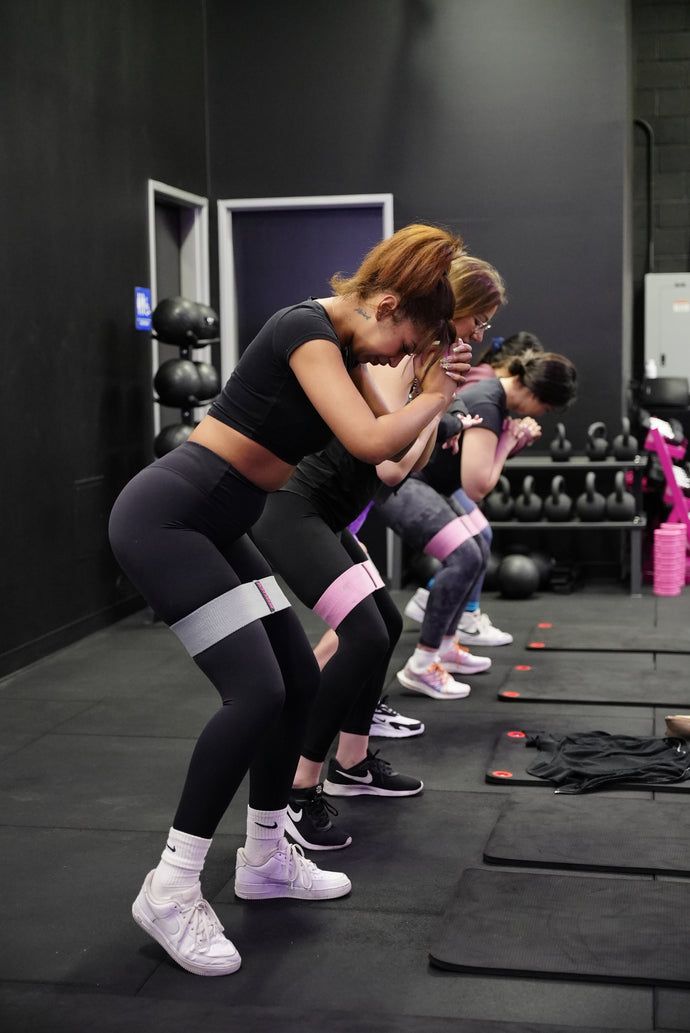Las Vegas Pilates: How to Strengthen, Sculpt, and Find Your Fitness Community
Las Vegas draws the world in with bright lights, shows, and nonstop energy. Yet beyond the Strip’s glamour, women across the city chase something far more personal: strength, confidence, and balance. Many turn to Las Vegas Pilates classes to find it. Pilates tones muscles, creates lasting energy, and shapes lean lines.
If you’ve been curious about trying Pilates in Las Vegas, here’s why now might be the perfect time to step onto the mat and discover how Pilates can transform not just your body, but your whole fitness journey.
Why Pilates Stands Out in a City of Options
Las Vegas brims with gyms, boot camps, and spin studios. Yet Pilates continues to attract women looking for something deeper. Instead of chasing endless reps or high-impact moves that leave your joints aching, Pilates works with intention.
It strengthens your core so every other workout feels easier.
It improves posture, giving you confidence the moment you walk into a room.
It sculpts long, lean muscles without bulk.
It reduces stress and sharpens focus.
Think of Pilates as your fitness anchor. In a city that thrives on constant movement, Pilates gives you grounding. Many women discover that after just a few sessions of Pilates, they stand taller, move smoother, and feel more energized in their daily lives.
The Unique Flavor of Pilates in Las Vegas
Every city develops its own approach to fitness. Here, Pilates blends the sophistication of a world-class destination with the down-to-earth vibe of women supporting women. You’ll find reformer workouts, mat classes, and fusion programs that combine Pilates with modern strength training.
What makes Pilates in Las Vegas special, though, is community. Women here don’t just show up for a sweat session. They show up for each other. Whether you’re new in town, juggling a busy career, or searching for a supportive circle of friends, Pilates becomes more than a workout. It becomes your space to belong.
That’s exactly why Bikini Fitness invests in more than equipment and routines. We’ve built a community where women connect, encourage, and push each other forward. When you step into class, you’re a part of a team.
Why Women Love Las Vegas Pilates
Pilates works for every woman at every stage of life. Whether you’re 25 and chasing a strong, sculpted look, or 45 and balancing fitness with family, Pilates adapts. Its true strength lies in flexibility—both in movement and in how it fits into your life.
For busy professionals: Pilates melts away tension from long desk hours, sharpens concentration, and sends you back into your day refreshed.
For moms: It rebuilds core strength, restores energy, and creates a routine that feels like genuine self-care.
For women chasing performance: Pilates fine-tunes athletic ability, boosts flexibility, and helps prevent injuries that derail progress.
This range of benefits makes Pilates a workout you can keep coming back to. No matter what season of life you’re in, it continues to deliver results that feel both practical and empowering.
How Bikini Fitness Elevates Pilates in Las Vegas
At Bikini Fitness, we see Pilates as more than a class. It’s a pathway. Women walk through our doors searching for physical results, but they leave with something more powerful: confidence, support, and tools for long-term wellness.
Here’s what sets us apart:
Expert guidance: Our trainers know how to challenge you while keeping movements safe.
Nutrition coaching: We pair Pilates with nutrition strategies so your body feels fueled and strong.
Community energy: You’ll meet women who swap stories and tips and keep you motivated.
Wellness support: Beyond workouts, we offer supplements, activewear, and gear that make fitness seamless.
When you invest in yourself through Pilates at Bikini Fitness, you don’t just gain toned muscles. You gain a lifestyle that makes you excited to show up again and again.
What to Expect in Your First Pilates Class
If you’re new to Pilates, don’t worry. You don’t need to be flexible or strong before you start. Every class builds from the ground up. Expect to:
Begin with controlled breathing and core engagement.
Move through exercises that target abs, legs, arms, and back.
Use your own body weight, or specialized equipment like reformers, for added challenge.
Leave feeling energized rather than drained.
Most women say they’re surprised at how much they sweat, even though movements feel slow and controlled. That’s the power of Pilates. It engages muscles you didn’t even know you had.
So when you walk into your first Pilates class at Bikini Fitness, come ready to feel both challenged and supported. You’ll leave with a smile and maybe a few sore spots in the best way possible.
Why Women Stick With Pilates
Consistency delivers results, but the reason women keep coming back goes deeper than toned muscles. Pilates works because it blends physical benefits with a lifestyle you actually enjoy.
It delivers progress without the burnout of punishing workouts.
It leaves you energized instead of exhausted, helping you take on your day with strength.
It connects you to women who cheer each other on and build friendships along the way.
It sets a rhythm of wellness that carries into work, family, and everything else you value.
Many members say Pilates becomes the workout they genuinely look forward to. Once you’ve felt the lift in energy, the encouragement from community, and the steady changes in your body, it shifts from an obligation to an anchor you don’t want to miss.
Pairing Pilates with Your Fitness Goals
One reason women choose Bikini Fitness is that we help connect the dots. Pilates works beautifully on its own, but when paired with targeted training and smart nutrition, results skyrocket.
Imagine this:
You attend regular Pilates classes to strengthen your core and improve flexibility.
You follow a nutrition plan designed to fuel workouts and support recovery.
You add in personalized training sessions for curated results.
That combination creates unstoppable momentum. It’s the Bikini Fitness difference, and it’s why our Pilates classes have become a cornerstone of so many women’s transformations.
How Pilates Builds More Than Muscles
Yes, Pilates strengthens and tones, but its reach goes beyond the physical. A consistent practice unlocks benefits that influence every part of your life:
Better sleep because your body feels balanced and relaxed
Improved focus from sharper concentration and body awareness
Increased confidence that shows up in the way you move and interact
These changes remind you that Pilates isn’t just about fitness. It’s about creating the version of yourself you want to carry into work, relationships, and daily challenges. When you notice those ripple effects, you see that the impact of Pilates stretches far beyond the mat.
Pilates as Self-Care
In a city that moves at full speed, Pilates offers a much-needed pause. The breathing, control, and mindful movements go beyond shaping muscles. They create space to slow down and reconnect with your body.
Many women discover Pilates doubles as both a workout and a reset. Stress melts, energy lifts, and clarity returns. It’s self-care in motion.
Here’s how Pilates supports your well-being:
Relieves stress by combining movement with focused breathing
Restores clarity so you can tackle decisions with a clear head
Recharges energy without leaving you drained
Builds confidence that carries into daily life
Whether you’re managing a demanding career, a busy household, or both, this kind of reset makes a difference. When life feels overwhelming, stepping onto the mat delivers exactly the recharge you need—helping you leave class feeling lighter, calmer, and ready for whatever comes next.
The Next Step: Joining the Bikini Fitness Community
If you’ve been looking for more than another gym, this is your moment. Bikini Fitness gives you the tools, the coaching, and the community you’ve been craving.
Step into class. Connect with women who share your goals. See what happens when Pilates becomes part of your life. You’ll discover energy you didn’t know you had, confidence you’ve been missing, and friendships that make fitness fun.
Pilates may start as a workout, but at Bikini Fitness, it grows into something far greater: a community that carries you forward. And it all begins here in Las Vegas.
FAQ: Pilates in Las Vegas
How often should I do Pilates? Most women see noticeable results with two to three sessions per week. Consistency matters more than intensity.
Do I need experience before joining a class? No. Pilates works for beginners and advanced clients alike. Our trainers guide you through every movement.
What should I wear? Comfortable, fitted activewear works best. You want to move freely without extra fabric getting in the way.
Does Bikini Fitness offer more than Pilates? Yes. Besides classes, we provide nutrition coaching, training, supplements, and gear so you have everything you need for success.
Why choose a Las Vegas Pilates class at Bikini Fitness? Because we combine expert instruction with a strong community of women who uplift each other, making your journey not just effective but inspiring.
Final Word
Las Vegas has no shortage of workouts, but Pilates at Bikini Fitness offers something unmatched. It sculpts, strengthens, and connects you with a community that celebrates every victory. If you’ve been waiting for the right moment to try a Las Vegas Pilates class, consider this your invitation. Step in, join us, and experience the power of Pilates in Las Vegas for yourself.Learn more about our Pilates Classes
Read More Here!




























